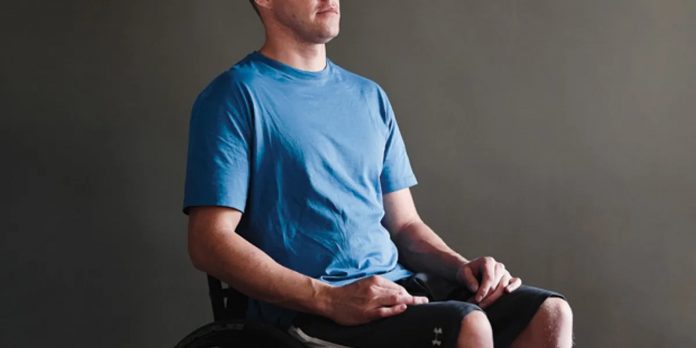Four young paraplegic men who have been paralyzed for years can now move their legs after epidural electrical stimulation of the spinal cord, say an international team of life scientists at UCLA, the University of Louisville and the Pavlov Institute of Physiology.
All of the research participants were classified as having a chronic motor complete spinal cord injury and were not able to move their lower extremities prior to receiving an implanted epidural stimulator unit.
The University of Louisville released an initial study of this procedure in the May 2011 edition of “The Lancet.” At that time, the epidural stimulator restored some motor functions for the first participant, Rob Summers. Summers was struck by a motor vehicle in 2005 and is paralyzed below the chest.
In the current study, three more participants were able to achieve voluntary movements immediately after the stimulator was implanted and activated. Kent Stephenson sustained an injury at T5-T6 during a motocross accident in 2009. Andrew Meas was in a 2007 motorcycle accident, resulting in an injury at C6-C7. Dustin Shillcox injured his spine at T5 in a 2010 auto accident in 2010.
Researchers say their findings had unexpected results, suggesting that some sensory pathways may be intact post-injury and could be able to facilitate voluntary movement. Researchers believe that some of the sensory pathways need to be intact for the procedure to be effective.
Direct epidural electrical stimulation of the lower spinal cord mimics signals from the brain that initiate movement. The triggering of the signal causes the spinal cord to reengage the neural network so that it directs and controls muscle movement. Rehabilitation therapy intensifies the effects of the epidural stimulation. Researchers observed that over time, participants required less stimulation to activate movements, showing that the spinal cord can learn and improve its nerve functions.
“Two of the four subjects were diagnosed as motor and sensory complete injured with no chance of recovery at all,” Claudia Angeli, Ph.D., lead author, senior researcher at the Human Locomotor Research Center at Frazier Rehab Institute, and assistant professor of the University of Louisville’s Kentucky Spinal Cord Injury Research Center (KSCIRC). “Because of epidural stimulation, they can now voluntarily move their hips, ankles and toes. This is groundbreaking for the entire field and offers a new outlook that the spinal cord, even after a severe injury, has great potential for functional recovery.”
The participants also demonstrated many improvements such as the ability to regulate their blood pressure, and had increased muscle mass, less fatigue and overall changes in their sense of wellbeing.
“We have uncovered a fundamentally new intervention strategy that can dramatically affect recovery of voluntary movement in individuals with complete paralysis even years after injury,” said Susan Harkema, Ph.D., Owsley Brown Frazier Chair in Clinical Rehabilitation Research at the University of Louisville, rehabilitation research director at KSCIRC, Frazier Rehab Institute, director of the Reeve Foundation’s NeuroRecovery Network. “The belief that no recovery is possible and complete paralysis is permanent has been challenged.”








